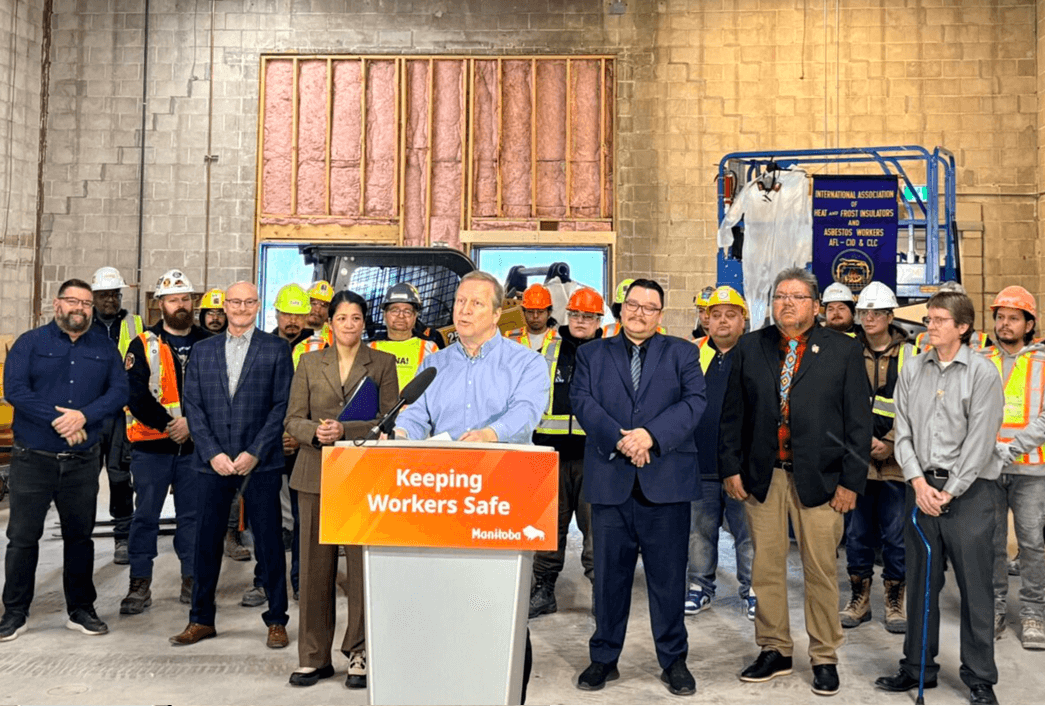
Unions improve the lives of their members by raising wages, increasing overall economic security, making workplaces safer and generally giving workers a voice on the job. But less well understood are the contributions unions make to social well-being beyond their memberships.
New research from the Canadian Centre for Policy Alternatives (CCPA) shows the positive correlation between unionization rates and social-being, particularly on measures related to the environment, income equality, and public health.
In “The Case For Pro-Union Public Policy: Unionization And Social Well-Being In Canadian Provinces,” authors Ian Hudson, Mark Hudson, Fond Udoh, and Anupam Das examine the connections between provincial unionization rates and three “uncontroversial elements of a good society”: environmental quality, income distribution and poverty, and health outcomes.
As the authors point out, we know that unions aim to advance the interests of their members, but we need a better grasp on whether and to what degree they “protect, advance, or detract from collective well-being for everyone.” The report thus comments on a range of empirical experiments to determine the extent that unionization improves social well-being overall.
Unions can influence social well-being in at least two ways: through bargaining for better pay, benefits and working conditions for their members, and through exercising political influence. It is the latter pathway with which the CCPA is most concerned. In fact, two of the measures — environment quality and health outcomes — were deliberately chosen because they are not typically associated with the “bread and butter” issues of collective bargaining.
Of course, there is also a more direct relationship between union density and political influence. The more workers that unions represent, and thus the more associational and financial power the labour movement has, the greater the latter’s influence on public policy will be.
To specifically test the impact of unionization on social well-being, the CCPA study compares its indicators of well-being across Canadian jurisdictions with different levels of union density.
While unionization rates do not vary greatly across Canada, there are some notable differences that make comparison useful. In Quebec and Newfoundland, nearly 40 per cent of workers were in unions in 2024, whereas in Alberta only 23.4 per cent of workers had access to collective bargaining in the same year, according to the latest Statistics Canada data. In some jurisdictions, unionization rates have dropped more dramatically than others. In British Columbia, for example, union density dropped from 34.3 per cent in 2000 to 29.6 per cent in 2020 as a result of anti-union legislation, according to the report.
The report first considers unionization’s impact on income inequality and poverty. Here the authors discover what they consider their most important finding: unionization reduces overall inequality. “[W]hen more workers are in unions, the very richest take home a smaller percentage of total income and the overall income distribution across all income groups is more equal,” they write.
Beyond collective bargaining, unions and labour federations frequently lobby and fight for better public economic benefits, including greater minimum wages, more generous unemployment, disability, family, and other payments, and stronger public pensions.
At the same time, however, the study finds no strong relationship one way or the other between unionization and poverty rates. The authors suggest this may be because unions tend not to represent the lowest-waged workers. However, given that poverty is much more prevalent among those outside of paid employment, this finding also points to the need for the labour movement to focus more squarely on expanding the welfare state and increasing the generosity of public benefits for non-workers.
For environmental measures, the study focuses on greenhouse gas (GHG) and total particulate matter (TPM) emissions. Here, the authors find that higher unionization is associated with lower GHG and TPM emissions. “[A]s unionization rates increase, there is a decrease in both GHG and TPM per capita,” they write. They further add: “In contrast to the idea that unions tend to prop up polluting industries to maintain jobs, at a public cost, our evidence suggests that higher unionization is associated with the public benefit of lower pollution levels.”
While particular unions may sometimes oppose environmental regulations when they threaten the jobs of their members, overall the labour movement has increasingly taken up environmental issues, particularly as the impacts of climate change have intensified.
When it comes to public health, unionization is also associated with better health outcomes, according to the report. Higher union density is associated with fewer deaths from treatable and preventable causes, and fewer deaths overall.
Unions in the broad health-care sector advocate for improvements to public health and frequently connect the working conditions of their members to the quality and funding of health-care services. The study authors highlight examples from Manitoba and Quebec where nurses and other health-care unions drew direct connections between workers’ concerns and public campaigns for a better health system. The study results suggest these types of campaigns have an overall positive impact.
Across all measures, the study controls for the influence of other factors that may influence inequality and poverty, GHG and TPM emissions, and mortality. In this way, the authors are able to single out the influence that unionization has.
As they conclude, “The evidence presented here suggests that when unionization rates are higher in Canadian provinces, the environment is cleaner, inequality is lower, and health is better.”
It’s for these reasons that attacks on unions’ political activities — such as Alberta’s Bill 32, which allows union members to opt out of paying dues where they are being used for supposed non-bargaining spending — are so troubling. Seeking to reduce unions to collective bargaining agents alone, as Alberta’s law does, limits the ability of labour to improve social well-being for the population overall. This amounts to a direct attack on the ability of unions and other labour movement organizations to promote equality and social welfare.
As Mark Hudson told Class Struggle, the CCPA report “suggests that unions aren’t just good for their members. They are, but higher unionization rates are also associated with better outcomes for the broad public.”
This should encourage governments to promote collective bargaining as a social good rather than restrict access to unionization.
“Obviously, workers have the right to free association, and on that basis, they ought not be actively prevented from organizing. However, if there is a positive public benefit to unionization, we can make a case that governments should be actively facilitating union organizing efforts,” the study summarizes.
“For governments, that means instead of trying to get in unions’ way when they organize, or even offering a ‘level playing field,’ there are good reasons to facilitate [unionization]. Governments should be looking at how to most effectively reverse the downward or stagnant trends in unionization rates if they want not just labour protections, but cleaner, healthier, less unequal societies,” Hudson added.
In Manitoba, the NDP government passed two important laws promoting unionization and protecting union members who strike. First, by reinstating card-check unionization, the government has made it easier for workers to join or form unions. While it’s still too early to tell whether this change will give a significant boost to union density, evidence from B.C. suggests that card-check can make an enormous difference in allowing more workers to certify unions.
Second, the Manitoba NDP government passed a strong anti-scab law that prevents employers from hiring replacement workers during strikes and lockouts. Prior to the law, CCPA research showed that employers in the province routinely used scabs to undermine striking union members’ leverage. With a strict replacement worker ban in place, this is thankfully no longer an option.
As important as these laws are, however, much more can be done across Canada to facilitate access to collective bargaining, particularly for workers in hard-to-organize jobs. Those working in industries with low wages and few protections often face nearly insurmountable obstacles to accessing unionization. To correct for this, governments need to consider broader-based collective bargaining arrangements, such as sectoral bargaining, which would allow workers and unions to negotiate contracts covering whole industries rather than single workplaces.
As the report shows, expanding collective bargaining in this way could not only benefit workers directly but also promote social well-being overall. There is a strong public policy case for allowing as many workers as possible to unionize and collectively bargain.
Recent Class Struggle Issues
- September 15 | Air Canada Flight Attendants Overwhelmingly Reject Wage Proposal
- September 8 | Public Servants In British Columbia Are On Strike
- September 2 | Air Canada Flight Attendants May Vote Down The Wage Package
- August 25 | Air Canada Flight Attendants Have Made Labour History







